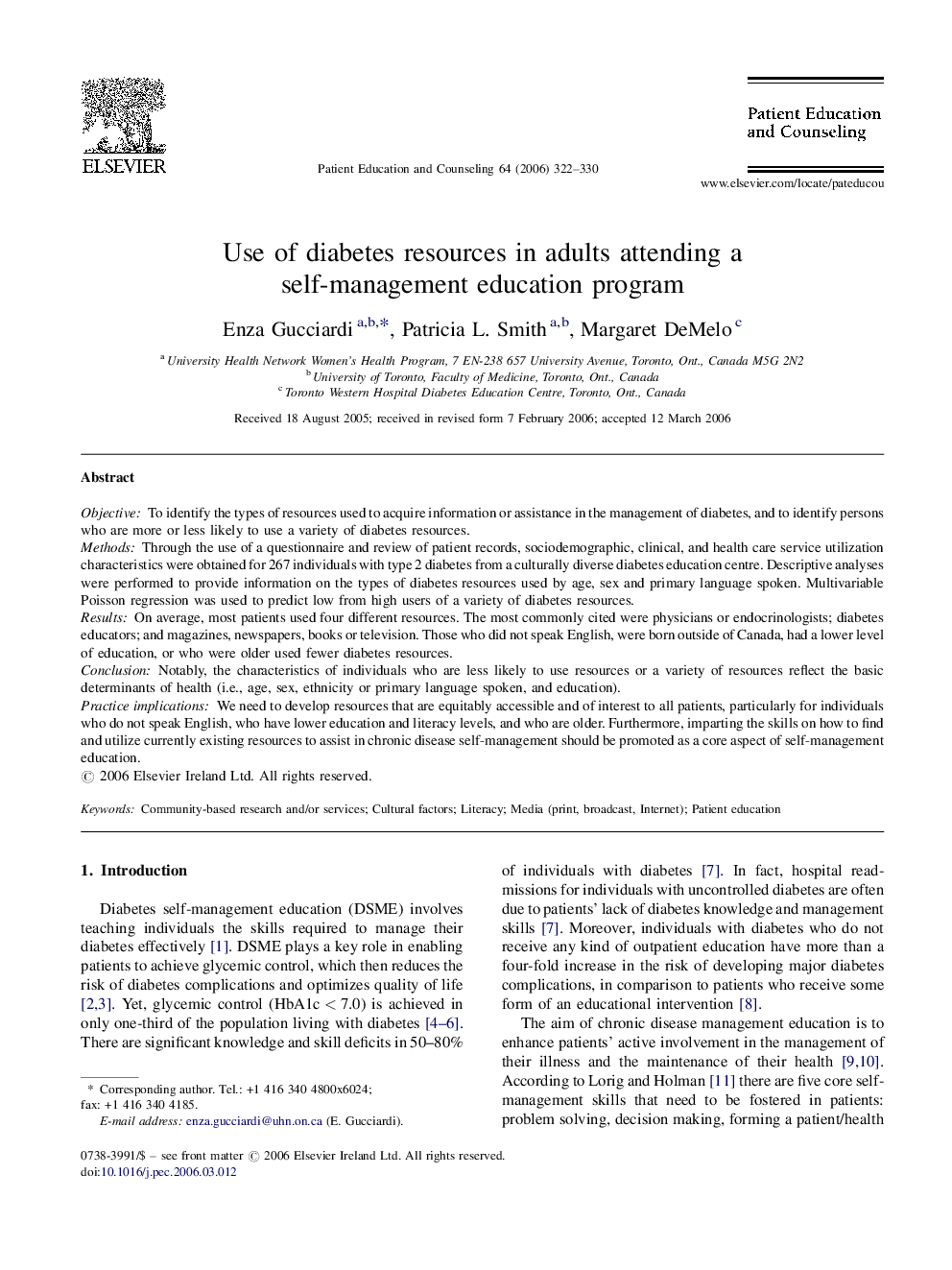| Article ID | Journal | Published Year | Pages | File Type |
|---|---|---|---|---|
| 3816718 | Patient Education and Counseling | 2006 | 9 Pages |
ObjectiveTo identify the types of resources used to acquire information or assistance in the management of diabetes, and to identify persons who are more or less likely to use a variety of diabetes resources.MethodsThrough the use of a questionnaire and review of patient records, sociodemographic, clinical, and health care service utilization characteristics were obtained for 267 individuals with type 2 diabetes from a culturally diverse diabetes education centre. Descriptive analyses were performed to provide information on the types of diabetes resources used by age, sex and primary language spoken. Multivariable Poisson regression was used to predict low from high users of a variety of diabetes resources.ResultsOn average, most patients used four different resources. The most commonly cited were physicians or endocrinologists; diabetes educators; and magazines, newspapers, books or television. Those who did not speak English, were born outside of Canada, had a lower level of education, or who were older used fewer diabetes resources.ConclusionNotably, the characteristics of individuals who are less likely to use resources or a variety of resources reflect the basic determinants of health (i.e., age, sex, ethnicity or primary language spoken, and education).Practice implicationsWe need to develop resources that are equitably accessible and of interest to all patients, particularly for individuals who do not speak English, who have lower education and literacy levels, and who are older. Furthermore, imparting the skills on how to find and utilize currently existing resources to assist in chronic disease self-management should be promoted as a core aspect of self-management education.
